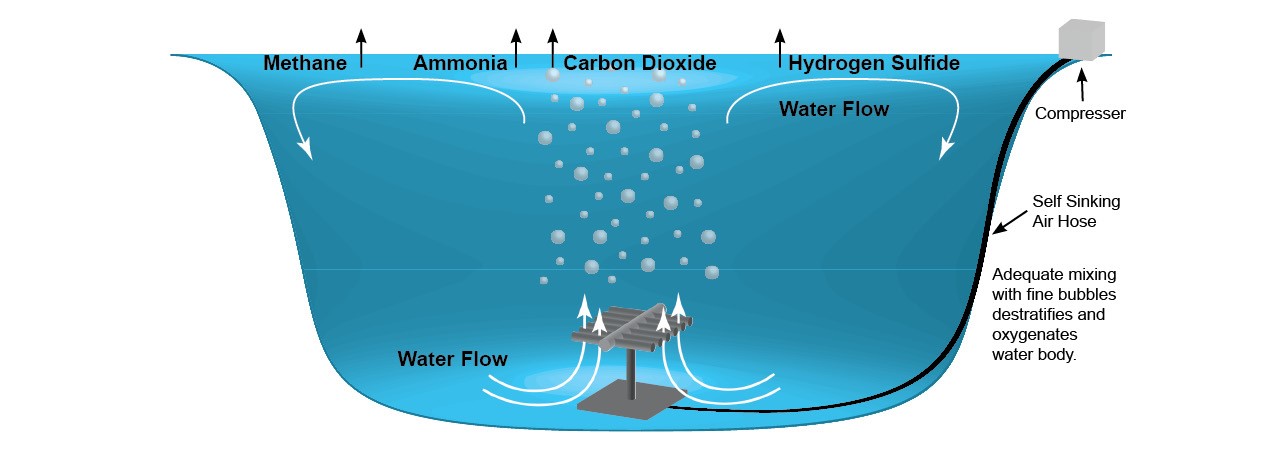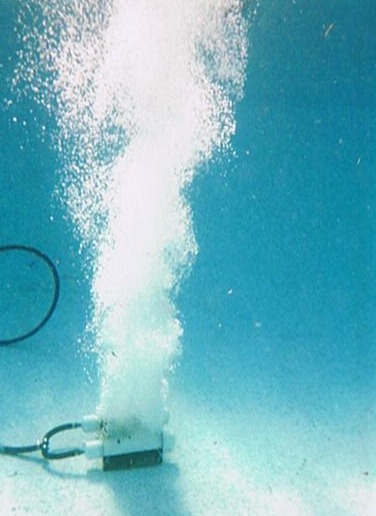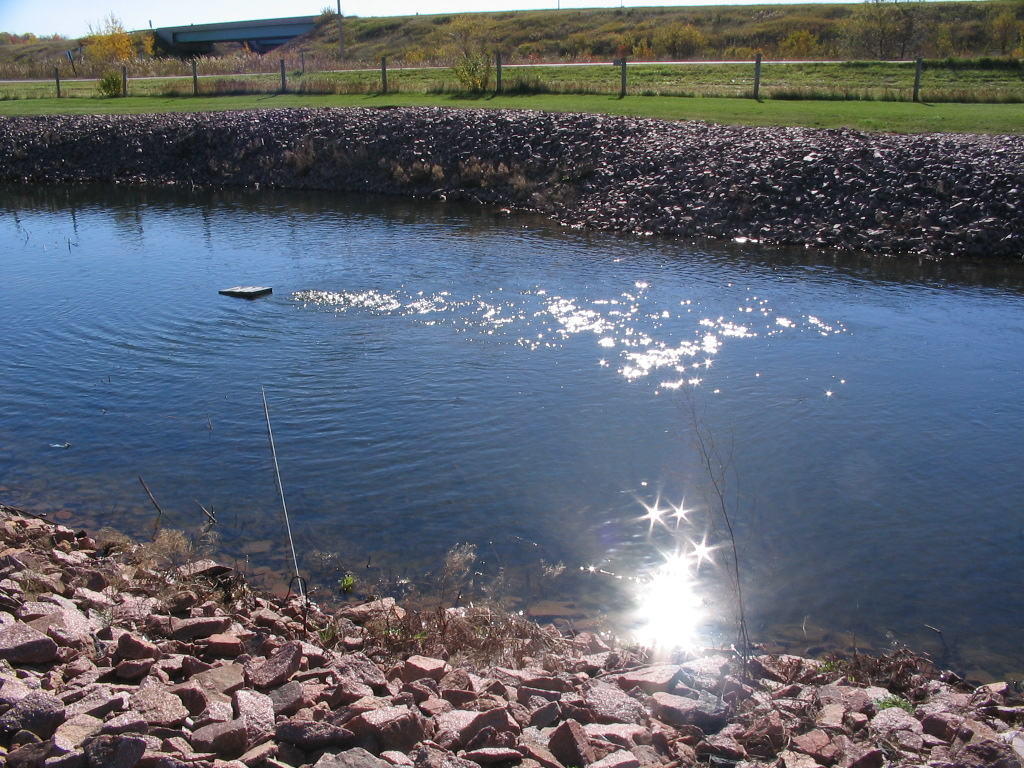There are many ways in which to aerate a body of water. Most of the available devices used today are covered here. The main objective for using an aeration system is to provide sufficient dissolved oxygen to the water column. Oxygen is the single most important water quality parameter. The sufficient amount of oxygen varies from pond to pond and lake to lake. Much of it centers on the biological oxygen demand (B.O.D.) and water temperature. All living organisms in an aquatic ecosystem need oxygen. Although fish consume oxygen from the water column, their excrement asserts a higher B.O.D. As feces and other organic litter builds up on the bottom, it forms sediment composed of a large percentage of organic material. Microorganisms, on the bottom of the pond, feed upon this organic matter and subsequently use up the available oxygen. During nighttime hours, plants and algae further reduce the available oxygen.

Diffused (Bottom) Aeration
Destratifies the water column making oxygen levels and temperature uniform throughout the lake or pond, thus the lake tends to be warmed. Systems of "fine bubble diffusers" are placed near the bottom of the water body. Compressed air is pumped through underwater airlines to the diffusers. The air then bubbles out through the diffuser material and rises through the water column to the surface. As air travels up the water column the pressure surrounding the bubbles slowly decreases causing the bubbles to increase in size. A slight current begins to develop. This current draws oxygen-depleted water and noxious gases from the bottom, transports it to the surface when it picks up atmospheric oxygen. A gentle "boil" is produced. This "boil" allows the noxious gases to escape the pond. These systems are extremely effective in destratifying a water body and are Aquatic Biologists, Inc. preferred method of aeration due to its many benefits.

Directional Flow
Used to turn stagnant, still or low flowing water into a stream environment while adding oxygen into the water column. Creating the stream environment may help limit the reproduction of mosquitoes in your area. In summer months, directional flow devices can be used to keep floating debris out of bays, marinas and canals; as well as around docks and beaches. Many directional flow devices can be angled downward to de-stratify ponds to about 18' in depth. Circulators can also be used in winter months to prevent winter kill of your fish population.

Hypolimnetic Aeration
This method brings oxygen to the hypolimnion (bottom) without destratifying the water column. A major advantage of this method is that different temperature layers are maintained, allowing a diverse fishery to be developed. Cold water fish (e.g. trout) are able to live in the colder water available within the hypolimnion while warm water fish species (e.g. blue gills, bass) are able to live and thrive within the epilimnion (upper).
© 2018 Aquatic Biologists
all rights reserved
